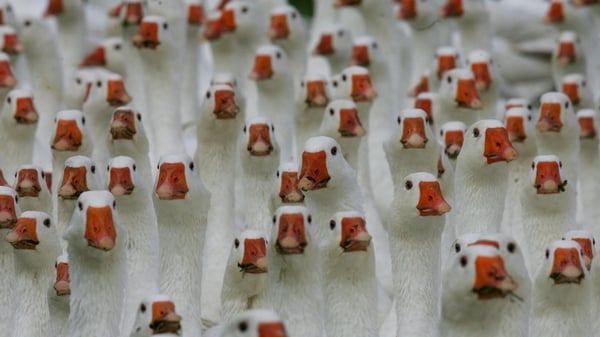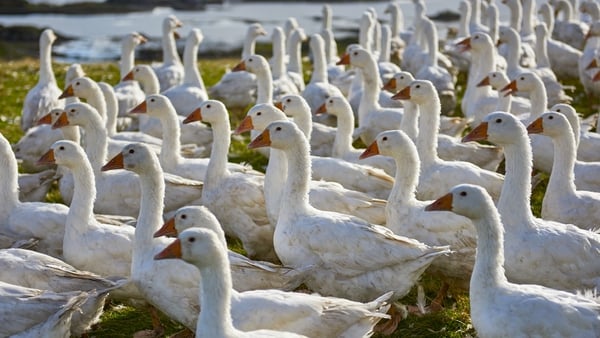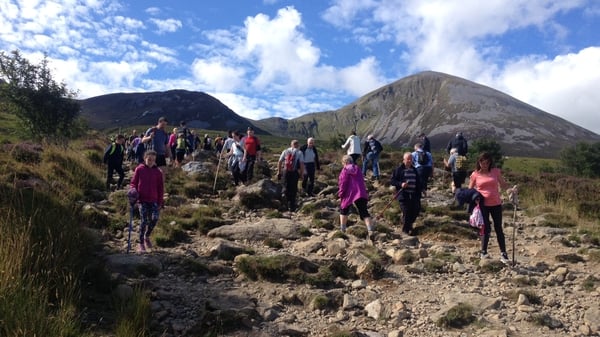Opinion: in the recent past in rural Ireland, many ringforts were associated with fairy activity and supernatural happenings
This article is now available above as a Brainstorm podcast. You can subscribe to the Brainstorm podcast via Apple, Stitcher, Spotify or wherever you get your podcasts.
When I visited my grandparents' house as a child, I heard my relatives refer to a 'fairy fort’ in the back field. It was left untouched by human hands, no ploughing or planting, or even grazing of livestock was allowed there. On walks, we went around it rather than through it, and its eroded banks were left overgrown. It was not much to look at standing next to it but, if viewed from above, would show a more remarkable, vaguely manmade circle of vegetation.
Looking down from a plane, you’ll see these circles dotted across Ireland. These are the most profuse archaeological monument in Ireland, the ringfort, often referred to as the fairy fort. Some, not all, have a dual reputation as places of historic dwelling and as supernatural places that allow access to the Otherworld. My relatives jokingly called this a fairy fort and avoided it ‘just in case’ of bad luck. Like many rural people, they understood what it was: a manmade structure from older, long forgotten times.
We need your consent to load this rte-player contentWe use rte-player to manage extra content that can set cookies on your device and collect data about your activity. Please review their details and accept them to load the content.Manage Preferences
From RTÉ Radio 1's Today with Claire Byrne, Brian O'Connell takes a tour of fairy forts in west Clare
Ringforts date from a time broadly spanning from the Iron Age to the early medieval period. Depending on the region, the earthen constructions are known as "raths," "lisses" or "duns" or stone versions known as cashels. In their original forms, they may have contained wooden buildings and fences. As timber structures did not last in the Irish climate, all that is left is their remnant outline, covered in vegetation. They formed part of the landscape, giving placenames and markers for local geographical identities. Rooted in the local, they inevitably became associated with local customs and folklore.
Many customs in Irish rural life have been dominated by superstitious beliefs, particularly fairy belief. In Irish tradition, fairies could be dark and malevolent, and interference with or by them could make or break a family’s luck, health, livestock, home or fortune. Essentially earth or nature spirits, they were thought to occupy a parallel universe, often conducted underground, and mostly invisible to the human eye. But they were deemed to be omnipresent with the ability to hear and see things at all times.
In the recent past in rural Ireland, many forts and some ancient monuments were associated with fairy activity. Their crossing over into the real world was facilitated by liminal spaces, and the chief portal points were fairy forts. Objects from the past that were found in fields were explained away as being their property. This would include prehistoric artefacts, bronze age axes, arrowheads and spinning whorls, known as thunderbolts, fairy darts and fairy millstones.
We need your consent to load this rte-player contentWe use rte-player to manage extra content that can set cookies on your device and collect data about your activity. Please review their details and accept them to load the content.Manage Preferences
From RTÉ Radio 1's Drivetime in 2015, a US pharma company are planning to develop a factory in Waterford on the site of a ring fort.
People avoided interfering with places or things that were thought to belong to the fairies. People even built their homes away from sites associated with fairies and away from fairy paths. When planning the building of a house, the selection of a site was not to be over a fairy assembly place or near a path thought to be used by them.
Disturbing any fairy property was a no-no. The Schools’ Folklore Collection abounds with tales of creepy goings on at fairy forts, and of people who meddled with them, incurred bad luck or who came to a bad end. One farmer, who thought it no harm to plough a fairy fort, was believed to have brought the following crushingly terrible sequence of events onto his head: "that night when he went to bed his money was stolen from him. The next morning when he went to plough, his horses were dead in their stables, his plough was gone also, all that year he had no luck. His cattle were stolen, his house went on fire, and his crops were all destroyed."
Many European countries have similar fairy traditions and folklore but such beliefs continued for a long time in Ireland. As a child, I heard that the demise of the DeLorean business in Belfast was attributed to a place of the fairies being destroyed to facilitate the construction of the factory. Modern urban myths abound too of people who destroyed fairy forts who incurred bad luck.
We need your consent to load this rte-player contentWe use rte-player to manage extra content that can set cookies on your device and collect data about your activity. Please review their details and accept them to load the content.Manage Preferences
From RTÉ Archives, RTÉ News report from February 1966 about the discovery of a ringfort on a new golf course in Fermoy, Co Cork
It must be said that fairy belief is something that is part of a long ‘dual’ tradition of folk beliefs in Ireland. Many people devoutly followed Christian beliefs yet chose to ‘play it safe’ and practice placation rather than profess disbelief in fairies. Paradoxically, a blessing by a priest was in some cases seen as the remedy to unwanted fairy activity.
This long custom of continuous and careful fairy appeasement may be one of the reasons that Ireland has so many well preserved archaeological remains. While the term ‘fairy fort’ has given these sites an ethereal veneer, it often belies the fact that they are significant part of our built heritage, protected by law and many larger forts are National Monuments. They are mapped and listed as part of our archaeological record, and can provide important insights into the history, material culture and modes of dwelling of the past.
We need your consent to load this rte-player contentWe use rte-player to manage extra content that can set cookies on your device and collect data about your activity. Please review their details and accept them to load the content.Manage Preferences
From RTÉ Archives, Cathal O'Shannon reports for Newsbeat in 1970 on Coffin Man Tim Hayes, who wants to be buried alive for 11 days in a coffin in a fairy fort in Co Wexford
Most Irish farmers continue to preserve them on their land, driven not by superstitious fear but out of an appreciation for heritage. Farmers are the custodians of many archaeological monuments and many are happy to liaise with archaeologists in the preservation and protection of sites on their land. Archaeologists engage with many strands of evidence in their work, including local history and folklore, in order to identify, record and protect them. Raising awareness of heritage, beliefs and facts plays a significant role in preservation of such sites. People should not be driven solely by superstition or folklore in their approach of fairy forts, but should also see them as important archaeological sites.
What of the fairy fort on my grandparents’ land? The old family smallholding is now long sold, absorbed into a larger neighbouring farm. That farmer uses the very pinnacle of modern farming practices and machinery. Yet the fort remains as overgrown and untouched as it was when I first encountered it in the 1980s and hopefully will remain so for a long time to come.
The views expressed here are those of the author and do not represent or reflect the views of RTÉ






